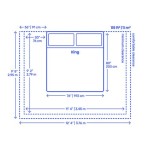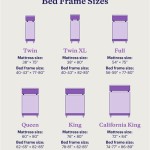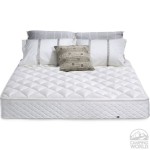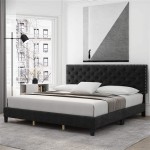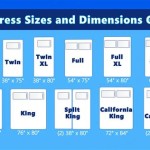Dog Bed German Shepherd Size: Selecting the Ideal Comfort for Your Canine Companion
Choosing the right dog bed is a crucial aspect of pet ownership, directly impacting a dog's comfort, health, and overall well-being. For German Shepherds, a breed known for their size, intelligence, and activity levels, selecting a suitably sized and supportive bed is particularly important. This article provides a comprehensive guide to understanding the factors influencing the ideal dog bed size for a German Shepherd, exploring various bed types, and offering practical tips for making an informed purchase.
German Shepherds are a large breed, typically weighing between 50 and 90 pounds and standing 22 to 26 inches tall at the shoulder. Their size necessitates a bed that provides adequate space for them to stretch out, relax, and sleep comfortably. A bed that is too small can lead to discomfort, restricted movement, and even exacerbate joint pain, particularly as the dog ages. Conversely, a bed that is excessively large might make the dog feel insecure and less protected.
Determining the Appropriate Size
The primary consideration when selecting a dog bed for a German Shepherd is its dimensions. The bed should be long and wide enough to accommodate the dog when fully stretched out, with a few extra inches to spare. To accurately determine the necessary size, measure the dog from the tip of its nose to the base of its tail while it is lying down. Add at least 6 to 12 inches to both the length and width to ensure ample space for movement and adjustments while sleeping.
For example, if a German Shepherd measures 40 inches from nose to tail, the ideal bed length would be between 46 and 52 inches. Similarly, the width should allow for comfortable stretching without the dog feeling cramped. Consulting product descriptions and customer reviews regarding actual interior sleeping dimensions is also worthwhile, as external dimensions can be misleading.
It's also important to consider the dog's sleeping style. Some German Shepherds prefer to curl up tightly, while others like to sprawl out on their backs or sides. Observing the dog's natural sleeping habits can help inform the decision-making process. If the dog tends to stretch out extensively, prioritizing a larger bed with plenty of room is advisable.
Exploring Different Types of Dog Beds
Beyond size, the type of dog bed plays a significant role in providing optimal comfort and support. Various options cater to different needs and preferences, including orthopedic beds, bolster beds, donut beds, and flat mats. Each type offers unique features and benefits that can address specific requirements of a German Shepherd.
Orthopedic beds are particularly beneficial for older German Shepherds or those with arthritis or joint problems. These beds typically feature memory foam or other supportive materials that contour to the dog's body, relieving pressure points and providing cushioning for aching joints. The supportive nature of orthopedic beds encourages proper spinal alignment and promotes restful sleep.
Bolster beds are characterized by raised sides or "bolsters" that provide a sense of security and offer a comfortable place for the dog to rest its head. These beds are often popular with dogs that enjoy cuddling or feeling enclosed. The bolsters also help to block drafts and provide insulation, making them a suitable option for colder climates or drafty homes.
Donut beds are similar to bolster beds in that they offer a circular or oval shape with raised edges. They are designed to encourage curling up and promote a feeling of security. These beds are often filled with plush materials that provide cushioning and warmth, making them a cozy option for dogs that enjoy snuggling.
Flat mats are a simpler and more versatile option, often used in crates, kennels, or as travel beds. They are typically made from durable materials that can withstand wear and tear. While they may not offer the same level of support or comfort as orthopedic or bolster beds, they can be a practical and affordable choice for younger, healthier German Shepherds.
Material and Durability Considerations
The choice of material significantly impacts the dog bed's durability, comfort, and ease of cleaning. German Shepherds are prone to shedding, and some may be heavy chewers, so selecting a bed made from durable, pet-friendly materials is crucial. The outer cover should be resistant to tearing, scratching, and moisture, while the inner填充物 should provide comfortable and supportive cushioning.
Common materials used for dog bed covers include canvas, denim, microfiber, and faux suede. Canvas and denim are known for their durability and resistance to tearing, making them a good choice for dogs that tend to scratch or chew. Microfiber is soft and comfortable, while faux suede offers a luxurious look and feel. Selecting a cover that is removable and machine-washable is highly recommended for easy cleaning and maintenance.
The inner填充物 of the dog bed can vary widely, including memory foam, shredded foam, polyester fiberfill, and cedar chips. Memory foam provides excellent support and conforms to the dog's body, relieving pressure points. Shredded foam offers a more flexible and customizable option, allowing for adjustments to the level of firmness. Polyester fiberfill is a cost-effective option that provides cushioning and insulation. Cedar chips offer natural odor control and insect repellent properties.
Furthermore, considering the bed's resistance to water and odor is also advantageous. Waterproof or water-resistant liners can protect the inner 填充物 from accidents or spills, prolonging the life of the bed and preventing the growth of mold or mildew. Odor-resistant treatments can help to neutralize unpleasant smells and maintain a fresh-smelling environment.
Addressing Specific Needs
Beyond general considerations, certain German Shepherds may have specific needs that influence the choice of dog bed. Senior dogs, dogs with arthritis or hip dysplasia, and dogs recovering from surgery require beds that offer enhanced support and comfort. Similarly, dogs with anxiety or those prone to destructive behavior may benefit from beds with specific features designed to address these issues.
For senior dogs or those with joint problems, orthopedic beds with memory foam are highly recommended. The supportive nature of memory foam helps to alleviate pressure on joints and promote restful sleep. Consider beds with a low profile or ramp to make it easier for the dog to get in and out of the bed without straining its joints. Heated dog beds can also provide additional comfort and warmth for dogs with arthritis.
Dogs with anxiety may benefit from beds that offer a sense of security and enclosure. Bolster beds or donut beds with raised sides can provide a comforting and protective environment. Weighted blankets or beds with calming features, such as pheromone diffusers, can also help to reduce anxiety and promote relaxation. Select durable materials that can withstand chewing or scratching for dogs prone to destructive behavior.
Dogs recovering from surgery require beds that provide ample support and prevent pressure sores. Orthopedic beds with a flat surface are ideal for preventing pressure points and promoting proper alignment. Ensure the bed is easily accessible and located in a quiet and comfortable area to facilitate healing and recovery.
In addition to these specific needs, consider the dog's environment and lifestyle when selecting a dog bed. If the dog spends a lot of time outdoors, choose a durable and weather-resistant bed that can withstand the elements. If the dog travels frequently, opt for a lightweight and portable bed that can be easily transported.
Cost and Budget Considerations
The price of dog beds can vary significantly depending on the size, type, materials, and features. Setting a budget before starting the shopping process is helpful to narrow down the options and avoid overspending. While investing in a high-quality dog bed is a worthwhile investment in the dog's health and well-being, there are also affordable options available that provide adequate comfort and support.
Orthopedic beds and those with specialized features, such as heating or cooling, tend to be more expensive than basic flat mats or bolster beds. Consider the long-term benefits of investing in a higher-quality bed, such as improved sleep, reduced joint pain, and increased longevity. Look for sales, discounts, and online deals to potentially save money on the purchase.
Moreover, assessing the cost-effectiveness of different options is beneficial. A less expensive bed that needs to be replaced frequently may ultimately cost more than a more durable and longer-lasting option. Read customer reviews and compare the features and benefits of different beds before making a final decision.
Furthermore, explore the possibility of buying a used dog bed in good condition. Many pet owners sell or donate used dog beds that are still in excellent shape. Check local classifieds, online marketplaces, or pet shelters for potential deals. Ensure the bed is thoroughly cleaned and sanitized before introducing it to the dog.

Dog Beds For Large Or Small Dogs Sleepycat India

Fluffy Fur Dog Bed And Thick Soft Cushion Comfortable Pet Crates Xxxl Dark Blue At 880 Piece Puppy In Chennai Id 2851302350233

Dog Bed Size For German Shepherd

Nz Dog Beds The Brooklyn Up To 70 Off Sitewide

Dog Bed For German Shepherd Petnap Heated

Dog Bed Orthopedic Sleepycat India

A Guide On How To Choose The Right Size Dog Bed Gentledogtrainers Com Au

Best Size Dog Bed For German Shepherd

Size Guide Orthopedic Dog Bed Dazy

Does My Dog Really Need A Bed Omlet Blog Uk

